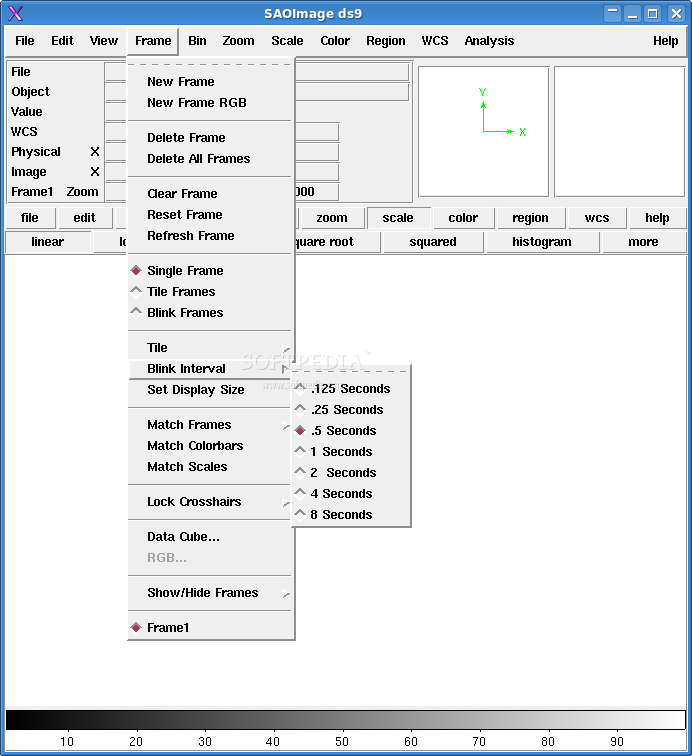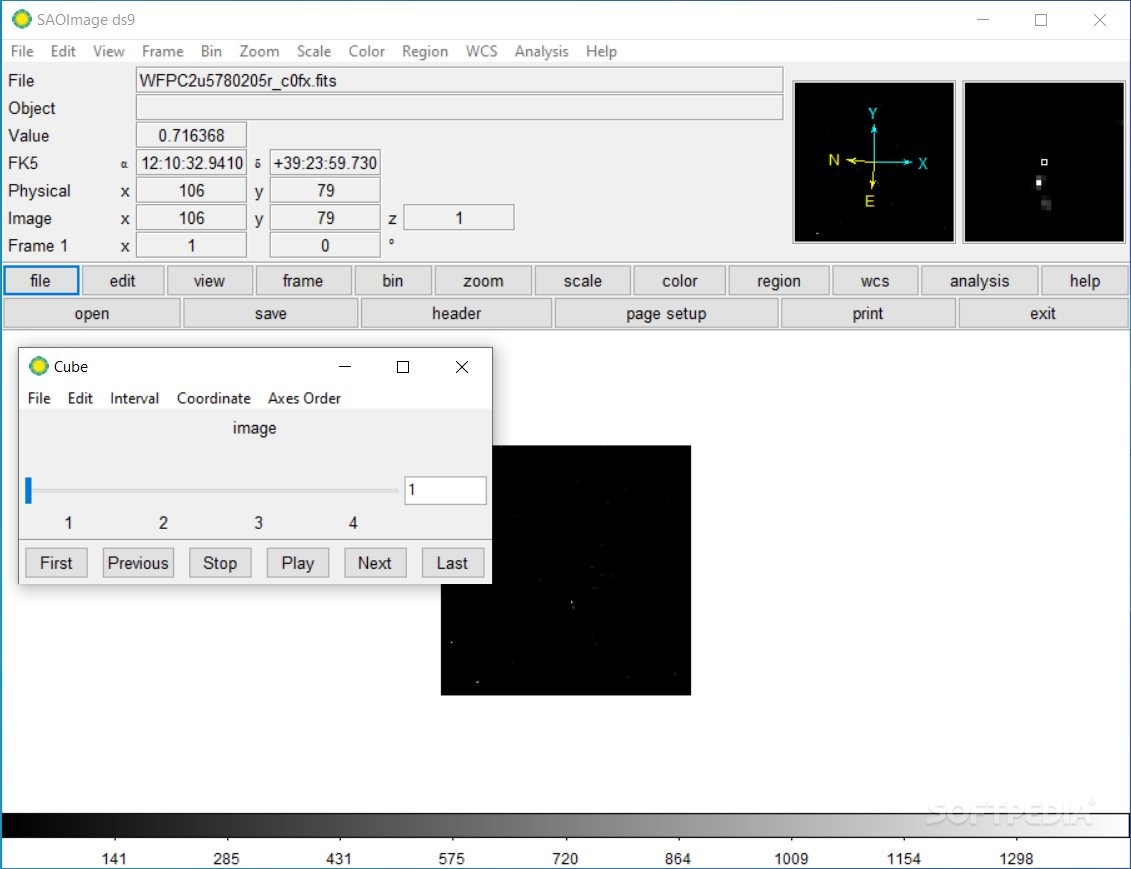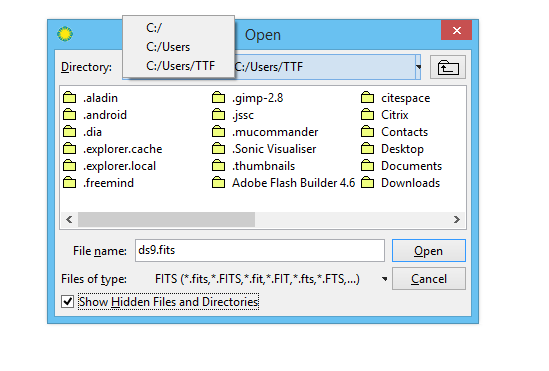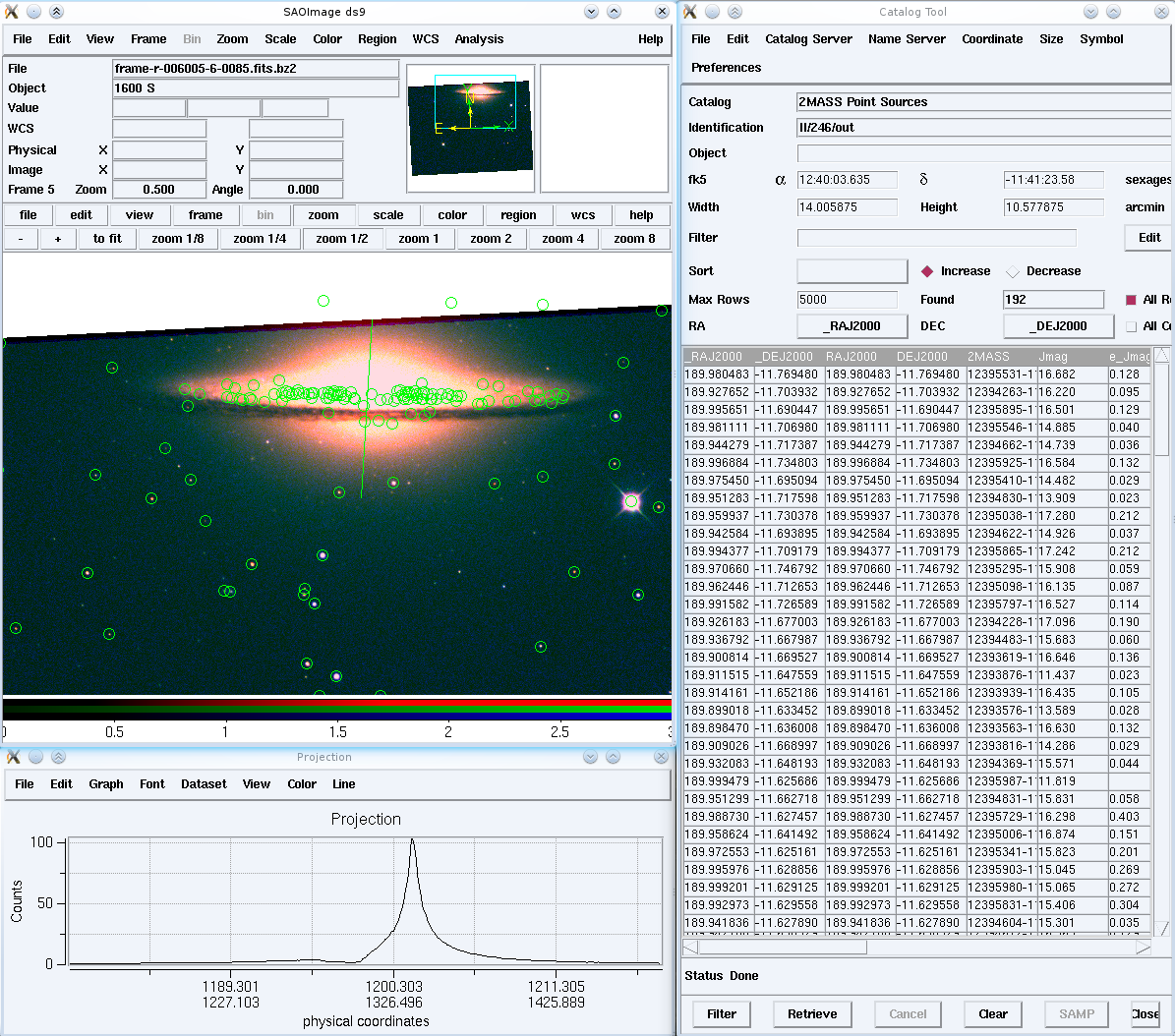

Only need to type the file name as part of the ds9 command line. To do this, set the environment variable DS9_BINKEYĮqual to. This a lot and do not want to have to type "" at the end ofĮach file name, it is possible to make this default action forĭs9. In this case we've chosen to make a map in Right AscentionĪnd Declination, but you could use galactic coordinates ( ) or Names of the columns to use for the x and y coordinates of the data toīin.

This isĬompletely optional and the choice of map "b" represents the personal

To see the data, use ds9 to create a quick counts maps of the events in the file.įor example, to look at the 3C279 data file, enter the following command: First, we'll look at making quick counts maps with ds9 then we'll perform a more in depthĮxploration of the data using fv. Ways to explore the data and make quick and dirty plots and graphs of In this section we look at several different There is no need to select event classes for bursts, as you will need all three event classes to gain statistics. This generates a data file from 500s before to 1500 seconds after the trigger time of the burst. Note: The grb_events.fits and grb_spacecraft.fits files were selected from the FSSC's LAT data server using the following criteria: grb_spacecraft.fits (52 kB) - the spacecraft data file for GRB 080916C.grb_events.fits (130 kB) - a 40 degree region around GRB080916C (trigger time = 243216766 MET).spacecraft.fits (62 MB) - the spacecraft data file for 3C279.3C279_region_filtered_gti_fits (9 MB) - a 20 degree region around the blazar 3C279 with appropriate selection cuts applied.
SAOIMAGE DS9 TUTORIAL DOWNLOAD
Tip: If you are running on SLAC Central Linux and experience problems with either ds9 or fv when using the astrotools environment variable (/afs//g/glast/applications/astroTools) try changing to a bash shell and sourcing kipac's profile.xray script (source /afs/slac/g/ki/software/etc/profile.xray).Ĭlick on the links below to download the files used in this tutorial See: Example: Setup (when running Science Tools on SLAC Central Linux). Note: You may wish to perform these exercises on SLAC Central Linux.
SAOIMAGE DS9 TUTORIAL WINDOWS
It is assumed that: you are working either in a Unix style terminal window, or inĪ Windows Command shell window and that the following are installed on your system and are in your path:
SAOIMAGE DS9 TUTORIAL INSTALL
Download and install from NASA's HEASARC: Software -> Fv: The Interactive FITS File Editor page.

You will be using the following FITS File This tutorial demonstrates various ways of examining and manipulating the LAT data, but it is a simple approach useful for quickly exploring the data. SciTools Reference pages to open in a popup window, click on: Open Popup Reference Window.


 0 kommentar(er)
0 kommentar(er)
